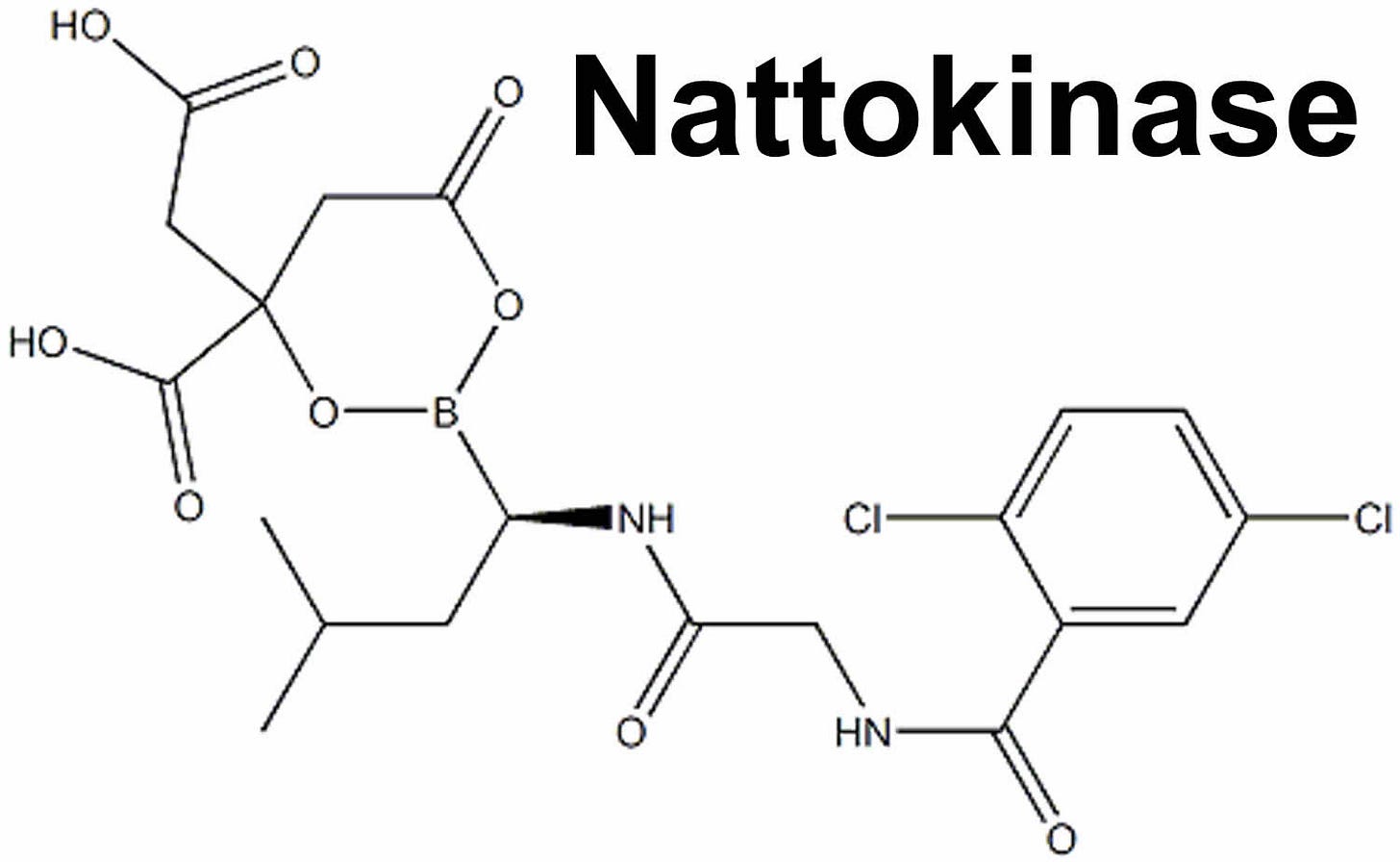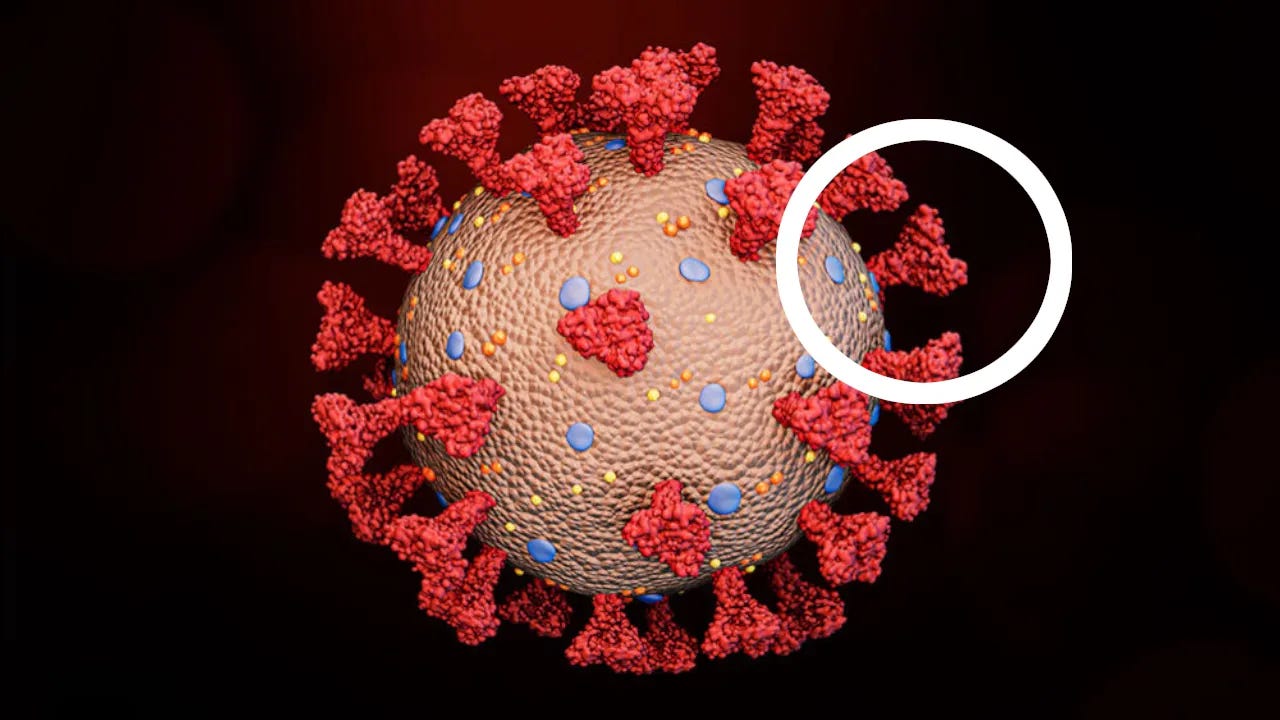Nattokinase Breaks Down Blood Clots Induced by Spike Protein
Nattokinase is a natural enzyme supplement that helps break down spike protein and supports the reduction of abnormal blood clotting.
What is Nattokinase?
Nattokinase is an enzyme extracted and purified from natto, a traditional Japanese food made by fermenting soybeans with the bacterium Bacillus subtilis var. natto.
Despite its name, nattokinase is not a kinase enzyme. It is a serine protease, an enzyme that breaks down proteins by cutting the peptide bonds between amino acids. Proteins, including spike proteins, are long chains of amino acids folded into specific shapes. Serine proteases like nattokinase cleave these chains into smaller fragments, which are later reduced to individual amino acids that the body can reuse or eliminate.
Natto and nattokinase have a long history of use for cardiovascular health, particularly in relation to atherosclerosis. Atherosclerosis is the gradual buildup of plaque inside the arteries, which can lead to heart disease, heart attacks, and strokes. Research shows that when nattokinase comes into contact with human blood or blood clots, it exhibits strong fibrinolytic activity, meaning it breaks down fibrin, the structural protein that forms clots. It also reduces the formation of new clots by lowering levels of plasminogen activator inhibitor, which enhances the body’s natural clot dissolving processes. In practical terms, nattokinase helps dissolve existing clots and may even help to prevent new ones from forming. This effect is similar to how medications like aspirin are used to lower cardiovascular risk, though nattokinase works through a different biological mechanism.
Most dietary proteins are broken down and inactivated during digestion, yet several studies suggest that nattokinase remains at least partially active when taken orally. This indicates that a portion of the enzyme may pass through the digestive system and enter the bloodstream in a functional form, making it much more effective for treating blood clots where they occur.
How Covid “Vaccines” and Spike Protein Trigger Blood Clots
Coronaviruses have spike proteins on their surface, and these spike proteins are covered in sugar-based structures called sialylated glycans. Many human cells also have sialylated molecules (sialoglycoproteins) on their outer membrane. Because of this, coronaviruses can initially attach to our cells through weak binding between spike protein sialylated glycans and cell-surface sialoglycoproteins. This is only a first step; it does not yet cause infection.
To enter a cell and begin replicating, the coronavirus must then attach to a specific entry receptor. In the case of SARS-CoV-2, the dominant entry point is the ACE2 receptor.
If a cell does not express ACE2, the SARS-CoV-2 virus may stick to the surface but cannot infect it or replicate.
Red blood cells and platelets have no ACE2 receptors, and the endothelial cells lining small blood vessels have very low levels. This means the SARS-CoV-2 virus can bind to red blood cells or platelets through sialic acid interactions, but it cannot use these cells to reproduce.
Some earlier human coronaviruses carry an enzyme on their viral surface called hemagglutinin esterase (HE). This enzyme performs two functions:
It helps the virus attach to sialylated molecules.
It breaks those attachments, allowing the virus to detach again.
This detachable binding acted as a kind of natural balance. Viral particles could temporarily attach to red blood cells or platelets and then later release, allowing the immune system or normal blood-cell recycling (in the spleen and liver) to remove them from circulation.
SARS-CoV-2, however, does not carry the hemagglutinin esterase enzyme. Without this release mechanism, the virus binds more persistently to sialylated surfaces. When this binding involves red blood cells or platelets, it can promote abnormal cell clumping, contributing to microvascular circulation problems in susceptible individuals.
For further exploration of these findings, read: Sialylated Glycan Bindings from SARS-CoV-2 Spike Protein to Blood and Endothelial Cells Govern the Severe Morbidities of COVID-19 (Link).
Each Pfizer dose contains an estimated 10 to 13 trillion mRNA molecules, and each Moderna dose contains an estimated 30 to 40 trillion molecules, based on the number of lipid nanoparticles per injection and the amount of mRNA encapsulated per nanoparticle. Once inside human cells, these mRNA molecules instruct the cell to produce the spike protein. The total quantity of spike protein ultimately produced in the body has not been directly measured, and the duration of production varies between individuals, since it depends on how long the mRNA remains intact and active.
Because each injection introduces trillions of mRNA molecules, it is safe to assume that the total amount of spike protein produced by the body is substantial. The spike protein generated from the injections is structurally similar to the spike protein of SARS-CoV-2 and, like the virus, lacks the hemagglutinin esterase enzyme. In my opinion, it is highly likely that these spike proteins are contributing to clotting related health issues following “vaccination,” as well as in individuals exposed to spike protein shedding from those who were injected.
Why nattokinase is gaining attention for post injection recovery
Nattokinase has been studied for a variety of potential health benefits. Research suggests that it may help lower blood pressure, improve circulation, and influence the gut microbiome in ways that can enhance immune function. As we covered earlier, because it is a fibrinolytic enzyme, nattokinase helps break down fibrin, the protein structure that forms blood clots, which explains many of its cardiovascular applications.
Blood clotting and microvascular injury are central to many of the adverse effects associated with the COVID injections and the spike proteins they cause the body to produce. For this reason, nattokinase has gained attention as a possible supportive therapy.
Importantly, laboratory studies have shown that nattokinase can degrade the SARS-CoV-2 spike protein. This discovery has led some clinicians and researchers to explore nattokinase as a candidate for assisting the body in clearing spike protein, whether produced after injection or encountered through environmental exposure.
Nattokinase is available on its own as a supplement. Common supplemental dosages range from 100 to 200 milligrams per day, though dosing may vary based on the specific product and health goals.
As always, individuals with bleeding disorders, those taking anticoagulant or antiplatelet medications, and pregnant or nursing women should consult a qualified and trustworthy healthcare provider before using nattokinase.
Help Us Restore Health in a Post Spike World
Humanity has been flooded with spike proteins, and we now find ourselves living through one of the most unprecedented moments in medical history. My team and I are dedicated to advancing research and providing real, evidence informed solutions that help people restore their health. The same conviction that compelled me to speak out at the beginning of this crisis continues to guide my work in recovery, healing, and the defense of medical ethics.
Our operation runs on a lean budget, and your support directly fuels this mission. Your contribution helps us develop science based detoxification strategies, share critical health information, and maintain one of the most active public health education platforms online, with more than 1,200 published posts in just four years. You can support this work through a paid Substack subscription or a one time donation.
Together, we can bring truth back into medicine and help people heal.












Live Blood Analysis (LBA) showed fibrins (which can have numerous causes) in my blood. On the advice of my Naturopathic Doctor I started taking Nattokinase. LBA and Hijama subsequently showed excellent blood flow! As with all supplements, I ony take a capsule about 3x per week for maintnance. Emphasis is on real food (from farmers), RO water (structured and re-mineralized), detoxification and healthy lifestyle.